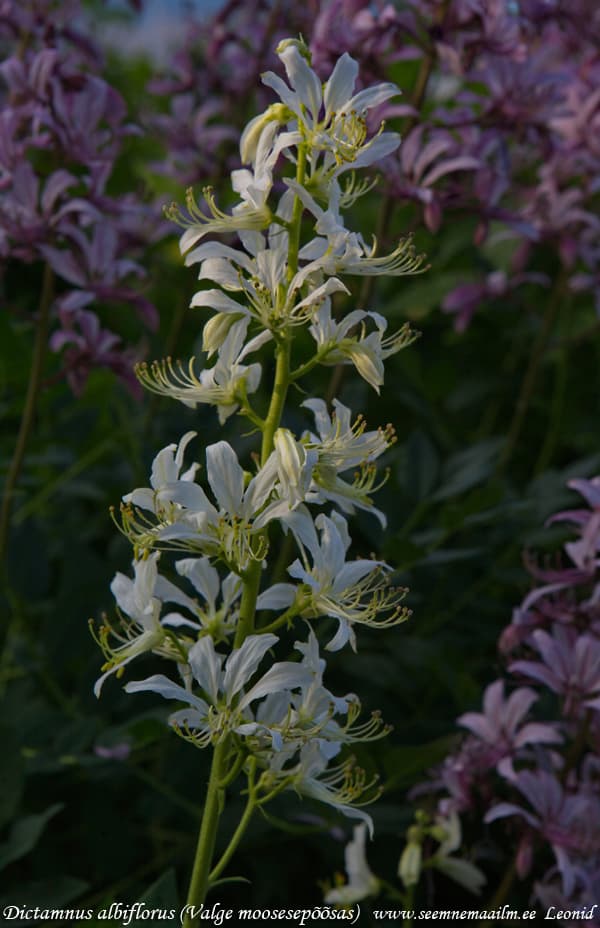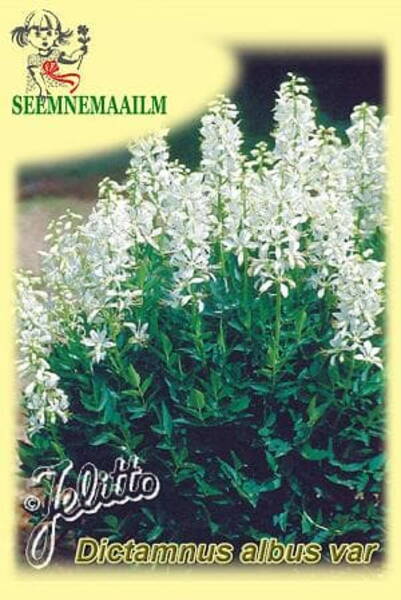Ex Tax: 1.35€
One of the most beautiful early flowering perennials, it belongs to the Rutaceae family.
Homeland: Western and Central Europe.
A perennial plant with a branched rhizome.The bush is slender, compact, 80 cm high.
The leaves are dense, on long petioles, serrated along the edges, covered with glandular hairs.
The flowers are white, fragrant, up to 2.5 cm in diameter, collected in racemes up to 20-25 cm long. Blooms in June-July for 30-35 days.
The fruit is a capsule, the seeds are black, shiny, ripen in August-September.
In culture since ancient times, from the extreme south to the taiga zone. Garden forms with pink and dark red flowers are known.

The burning bush is distinguished by such a high content of essential oils that if during the period of seed ripening (in dry and hot weather) you bring a lit match to the plant, it will momentarily burst into blue flame!
Location: best development is achieved in open, sunny places; light shading does not have a noticeable effect on their development.
Soil: avoid damp soils, grow well in any cultivated and sufficiently nutritious soil containing lime.
Care: normal. Weeding, loosening (or better yet, mulching) the soil, occasionally watering and fertilizing (preferably with alkalizing fertilizers). In Estonian conditions, it winters well under snow without additional shelter.
Reproduction: by seeds, dividing the bush and cuttings. The seeds ripen in August, if you do not keep an eye on them, the fruits crack and the seeds scatter within a radius of 3 m. They are sown immediately after collection in open ground. When sown in autumn, some of the seeds germinate only after a year.
Seedlings dive at a distance of 15 cm, grow for 2-3 years, then are planted in a permanent place, blooming for 3-4 years. The bush is divided in spring or autumn. In summer, transplantation and division lead to the death of the plant. The separated parts are planted 35-40 cm apart and watered abundantly. They can grow in one place for 8-10 years. Cuttings are taken from young, non-lignified shoots; for better rooting, treatment with heteroauxin is required.
Use: in single and group plantings, mixborders. These plants are good in rockeries, which corresponds to their nature, because in their homeland they settle among stones.
You can also grow them in fertile flower beds, where they will decorate the central part of the flower garden, away from the paths. Often used in composite flower beds of dry-loving plants.
When cut, it takes 4-5 days.

Burning bush, bastard dittany, gasplant, white dittany, white fraxinella. Bot. syn.: Dictamnus caucasicus (Fisch. et C.A.Mey.) Grossh., Dictamnus fraxinellus Pers., Dictamnus fraxinellus var. caucasicus Fisch. et C.A.Mey.












